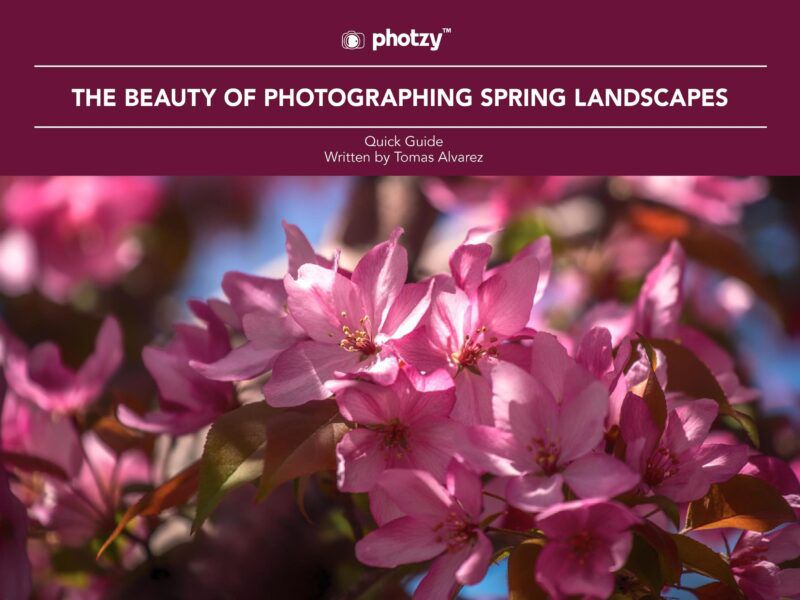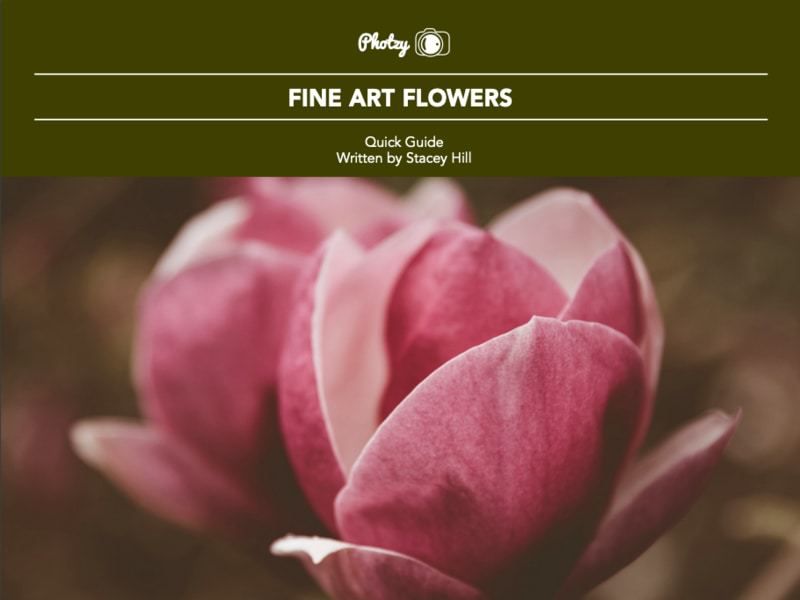4 Free Guides and Assignments for Amazing Flower Photos
Flower photography is a realm of endless possibilities, where the delicate intricacies of nature meet the creative vision of the photographer. From the vibrant hues of spring blooms to the subtle elegance of a lone petal, flowers offer a myriad of opportunities to capture nature’s artistry.
This article delves into four comprehensive guides on flower photography, each offering unique insights and techniques to elevate your floral shots. Whether you’re a budding photographer or a seasoned pro, these guides provide a ‘bouquet’ of knowledge, ensuring that your flower photos blossom with creativity and skill.
1. Camera Settings for Gorgeous Flower Photos
Key Takeaway
-
Master Manual Focus for Detailed Shots
When diving into flower photography, especially when capturing intricate details, autofocus might not always be your best friend. For shots where you’re focusing at 1:1 magnification or even smaller, the slightest movement can throw off your focus. In such situations, it’s beneficial to switch to manual focus. By setting your lens’ focus at a specific magnification, you can gently rock your camera forwards and backwards in tiny increments until you nail that sharp image. This technique gives you more control and precision, ensuring that the exact part of the flower you want in focus is captured perfectly.
Try this Assignment
Choose a flower with intricate details, such as one with rain droplets or unique textures.
Set your camera to manual focus and select a specific magnification. Gently rock your camera forwards and backwards to find the perfect focus point.
Capture multiple shots, experimenting with different parts of the flower.
Review your images and note the differences between the manually focused shots and any taken with autofocus.
2. The Beauty of Photographing Spring Landscapes
Key Takeaway
-
Capturing the Essence of Spring
Spring is a season of renewal, offering photographers a fresh canvas filled with vibrant colors and dynamic subjects. One of the standout features of spring is its transitional nature, bringing unique opportunities for photography that aren’t available year-round. Flowing water and flowering plants, especially trees, are some of the most captivating subjects during this season. Waterfalls, in particular, with their roaring waters, serve as a metaphor for life and can be incredibly mesmerizing to capture. On the other hand, flowering trees, like the crabapple tree, can be equally enchanting, with their boughs of blossoms that can captivate any observer.
Try this Assignment
Locate a flowering tree in full bloom. Observe the patterns of the blossoms and how they cluster together.
Focus on capturing the changing lighting conditions, ensuring you pay attention to both the sky and the foreground.Aim to capture the delicate nature of the flowers, contrasting it with the sturdy trunk and branches.
Experiment with different angles, lighting, and compositions for both subjects.
3. Fine Art Flowers
Key Takeaway
-
Embrace the Art of Post-Processing
In the realm of fine art flower photography, post-processing plays a pivotal role in transforming a simple photograph into a piece of art. Shooting in RAW is highly recommended as it provides a wealth of data that can be manipulated during the editing process. Using software like Lightroom, photographers can make both standard and creative edits to their images. From adjusting the exposure and color balance to applying creative presets, the possibilities are endless. For those who wish to push the boundaries of creativity, tools like Photoshop offer even more advanced editing options, allowing photographers to warp, stretch, and layer elements to create unique compositions. The key is to view post-processing not just as a tool for correction but as a medium for artistic expression.
Try this Assignment
Capture a RAW image of a flower, ensuring it’s well-lit and in focus.
Import the image into a software like Lightroom.
Start with basic edits like exposure, contrast, and color balance.
Experiment with creative presets or filters available in the software.
For those familiar with Photoshop, try advanced editing techniques like layering, warping, or adding textures.
Compare the original image with the edited version and reflect on the changes made.
4. Getting Creative with Nature and My Camera
Key Takeaway
-
Using Specialized Techniques for Unique Results
Nature photography offers a vast canvas for creativity, and sometimes, the most captivating images come from employing specialized techniques. Two such techniques highlighted in the guide are “focus stacking” and “shoot-through.” Focus stacking involves taking multiple exposures at different parts of the subject and then combining them in post-processing. This results in an image with a deeper depth of field than a single exposure could provide. On the other hand, the shoot-through technique involves placing an object between the camera lens and the main subject, producing a soft, blurred overlay effect and potentially tinting the image with the color of the shoot-through object. These techniques can elevate a simple nature shot, especially close-up and macro images, into a piece of art.
Try this Assignment
Choose a flower as your subject. Ensure it’s stationary, and there’s minimal wind if you’re outdoors.
For focus stacking: Take multiple exposures of the flower, focusing on different parts (e.g., petals, stem, center) during each shot.
Use post-processing software to combine these exposures, creating an image with enhanced depth of field.
For the shoot-through technique: Place a translucent object (like a colored glass or fabric) between your camera and the flower.
Capture the image, observing the soft overlay effect and any color tint introduced by the object.
Compare the results of both techniques with a standard shot of the flower.
Next Steps…
Unlock the secrets to stunning flower photography with Photzy’s hands-on Fabulous Flowers Premium eBook. It’s the simplest route to mastering the art of capturing breathtaking floral images. Inside this 156-page guide, you’ll find practical assignments, essential lessons, and quizzes designed to track your progress (including 15 assignments, 26 key lessons, and 70 self-check questions). Get ready to have the beauty of flower photography at your command with professional techniques made easy. Get Fabulous Flowers now.




